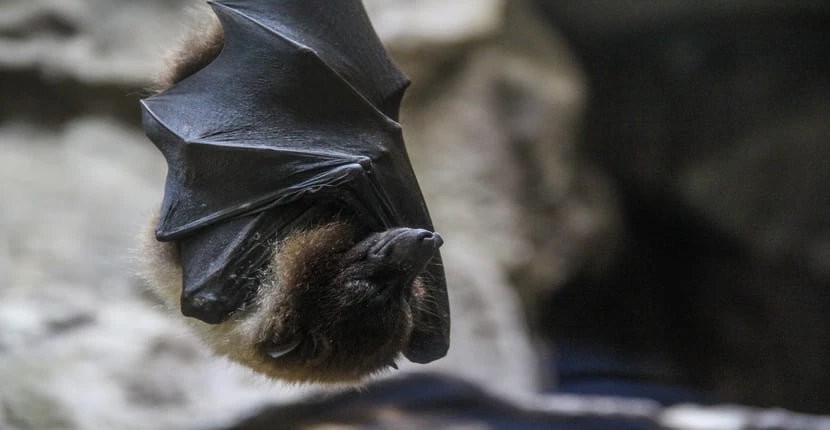At Invasive Weed, we specialise in bat surveys [zip] to support planning applications, land development, and conservation efforts.
Bats are legally protected in the UK, meaning that any construction, demolition, renovation, or tree removal projects must ensure they do not disturb bat populations or their roosting sites.
Our licensed ecologists provide Preliminary Roost Assessments (PRA), Bat Emergence Surveys, Hibernation Surveys, and Mitigation Plans, ensuring legal compliance and effective conservation.
For a bat survey and across the UK, contact us today for a consultation.
What Is the Bat Survey Process?
The bat survey process begins with an initial site inspection, where ecologists conduct a Preliminary Roost Assessment (PRA) to identify potential bat habitats and determine whether further surveys are necessary.
This is followed by field surveys and monitoring, using specialist bat detectors, thermal imaging, and visual observations to conduct Emergence and Re-entry Surveys at dusk and dawn. During data collection and analysis, ecologists record bat species, flight patterns, roosting sites, and environmental conditions to assess the impact on development.
Finally, a detailed report is produced, outlining findings, legal considerations, and mitigation strategies to support planning applications.
What Types of Bat Surveys Are Available?
Bat surveys include preliminary assessments, emergence and activity monitoring, hibernation studies, and mitigation planning with licensing support.
These surveys also include:
Preliminary Roost Assessment (PRA) – A desk-based study and on-site inspection to assess potential bat roosting sites in buildings, trees, or structures.
Bat Emergence & Activity Surveys (BERS) – Conducted at dusk and dawn, these surveys involve visual monitoring and bat detectors to record bat activity and flight patterns.
Bat hibernation surveys – Specialised surveys conducted during the winter months to identify hibernating bat populations in caves, buildings, and trees.
Bat mitigation plans & licensing – If bats are present, we develop mitigation strategies (such as bat boxes, roost relocation, or habitat protection) and assist with Natural England license applications.
How Much Does a Bat Survey Cost?
Bat survey costs range from £300 to £5,000+, depending on survey type, site size, and project complexity.
A Preliminary Roost Assessment (PRA), the initial stage of a bat survey, typically costs between £300 and £600. If bats are present, further Bat Emergence and Re-entry Surveys (BERS) are required, costing between £800 and £2,500, depending on the number of survey visits needed.
More detailed hibernation surveys and Mitigation plans can range from £1,500 to £5,000, particularly for complex development sites. Additional expenses may include licensing fees (£200–£500), mitigation measures (such as bat boxes), and follow-up monitoring (£500–£1,500 per visit).
Contact Invasive Weed to get customised pricing for bat survey projects in targeted biodiversity.
Is a Permit Required for a Bat Survey?
Bat surveys are required under the Wildlife and Countryside Act 1981 and the Habitats Regulations 2017 to provide strict protection for all bat species and their roosts, making it illegal to capture, handle, or disturb bats without a license.
Construction, demolition, or tree removal that affects bat habitats cannot proceed without an ecological assessment. If a bat roost is found on-site, a European Protected Species (EPS) mitigation license may be required before development can continue.
We assist in obtaining permits and ensuring full legal compliance, guiding clients through licensing applications and implementing necessary mitigation strategies.
How Long Does a Bat Survey Take?
Bat surveys take from one week to several months, depending on survey type, seasonality, and project scope.
Preliminary Roost Assessments (PRA) can be completed within 1–2 weeks, while Emergence and Activity Surveys require multiple site visits over a period of several months, particularly if seasonal conditions apply.
Some species-specific surveys, such as Bat Hibernation Surveys, can only be conducted during winter months (November–March).
What Are the Environmental Considerations in a Bat Survey?
Bat surveys help mitigate habitat loss, which is a key consideration with strategies such as installing bat boxes, creating artificial roosts, and establishing wildlife corridors to support bat populations.
Additionally, reducing disruption to bat activity is essential, requiring measures to minimise light pollution, noise, and habitat fragmentation during construction. Compliance with conservation laws is also a priority, ensuring that legal and sustainability requirements are met to prevent ecological damage and regulatory penalties.
Contact Invasive Weed to get detailed information on bat surveys in targeted biodiversity.

